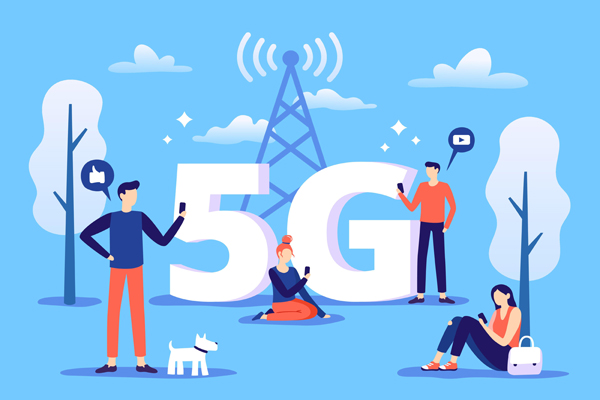Now is the time to use 5G indoors

Now is the time to use 5G indoors
Operators have made huge investments in 5G RAN, which can now deliver excellent outdoor performance. But while mid-band spectrum with massive MIMO provides some indoor coverage, dedicated indoor 5G systems are still needed to deliver a great indoor experience and enable advanced use cases.

Indoor 5G coverage in places like offices, airports and arenas is now imperative. 5G sets new performance benchmarks and raises customer expectations in all regions. Better indoor service is not only important for operators and customers, but also for venue owners. In the medium term, 5G Internet of Things (IoT) is emerging in several indoor scenarios, including private networks.
Many indoor systems have not yet been upgraded to 5G, and many venues and businesses have yet to achieve private coverage. This situation will change. For operators, enterprises and venues looking to deploy private 5G solutions, there are three key issues to consider: spectrum, technology and business model.
Spectrum Options for Indoor 5G
Before considering which additional frequency bands are needed for user services, a baseline of current indoor coverage needs to be established on the already deployed mid-, low-, and high-band spectrum. Businesses and venues need to choose the best option from licensed, shared or unlicensed spectrum; a location's RF characteristics, density of needs and many other factors will ultimately determine their choice.
Specific use cases will also drive spectrum decisions for indoor use. For example, in manufacturing facilities or dense user environments, mid-band and high-band frequencies are advantageous due to the higher capacity advantage. Additionally, some indoor locations have special requirements for uplink performance and low latency.
Technology selection for venue and indoor coverage systems
Good indoor 4G solutions already exist, but these form a diverse and complex install base made up of a mix of building types and technology generations. 5G also provides diverse technical solutions for indoor and campus area systems. In a nutshell, there are two main options:
- Distributed Antenna System (DAS): DAS is not going away, it is a mature technology and will continue to be important. However, the many flavors of DAS make it difficult to navigate. An assessment of the system's ability to support a sufficiently wide range of 5G frequencies will determine whether it is feasible to upgrade existing deployments, or if a new installation is required. Encouragingly, there are many innovations in DAS, such as creating energy-efficient systems, introducing support for MIMO, and enabling higher frequencies and wider channel widths.
- Indoor small cell systems: There are many types of small cells to meet different coverage, capacity and spectrum requirements. This operating model is more similar to that used by Wi-Fi, making deployment and maintenance of small cells relatively simple. Likewise, there has been a lot of innovation in products, and venues of all sizes now have dedicated indoor systems.
In both cases, installation logistics create challenges when new cabling is required for power and fiber optics. Innovations like bi-directional optics can allow fiber to be reused in some places, but venues must weigh options, cost and time before choosing a solution. Enterprises can really benefit from the expertise of suppliers and system integrators to navigate this complexity.
Ownership and Business Model
Superior connectivity and independently verified network performance benchmarks are now critical to venue owners looking to ensure an excellent guest experience and make their venues ideal for new users and businesses. The value of connectivity to venue owners and businesses could be key to accelerating 5G deployments indoors and on campus.
There are several business models that address the importance of mobile connectivity to venues and end users. Key issues to consider include:
- Multi-carrier, neutral host: This deployment model is suitable for public and multi-tenant venues. For users, this means greater reach and more choices. For venues, this model makes in-building coverage more attractive to tenants. Neutral hosting providers who operate network facilities on behalf of venues and lease access from operators are becoming valuable contributors in this market. The main challenge is to ensure that the economic incentives work for all parties.
- Single Carrier Installation: This model can successfully deliver brilliant, reliable performance. Historically, these deployments have been funded by operators and tied to long-term strategic contracts. Enterprises or venues can fund or partially fund the installation according to the situation.
- Public and private access: This model is particularly attractive in large venues where public access and private services are required for venue operations, such as airports and stadiums. This model is already common in Wi-Fi networks, where public "guest" access and private services can be securely delivered over a common infrastructure.
Indoor 5G is the next logical step to support greater capacity, user experience and true 5G use cases throughout the network. Now is the time for venues and enterprises to work with operators to ensure indoor 5G coverage is delivered on a sustainable long-term basis.
—Ruth Brown, Principal Analyst, Mobile Networks, Heavy Reading